Selected Plants of Navajo Rangelands
Saltcedar
K’eiłichii’its’óóz
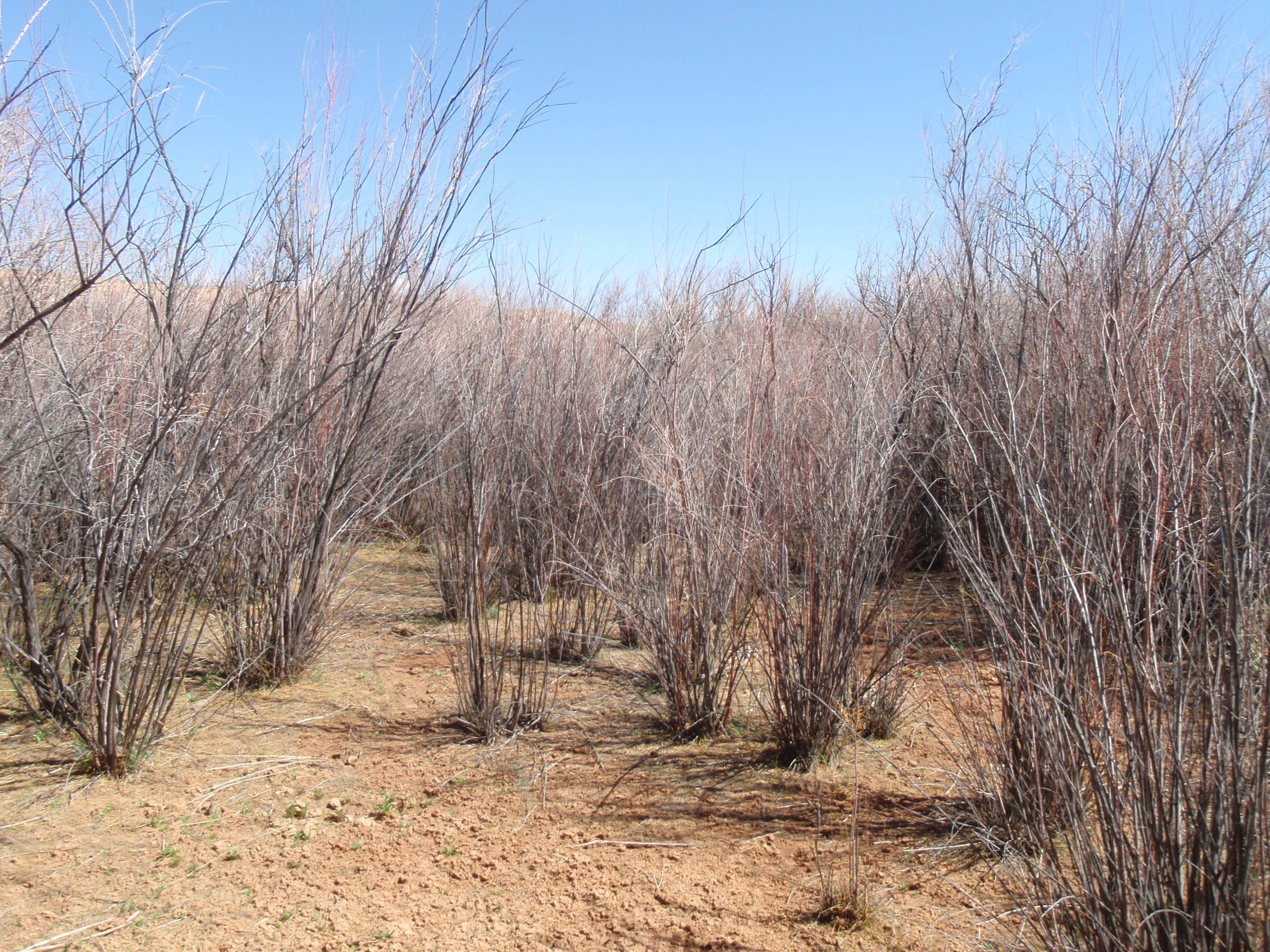
Saltcedar is a perennial, introduced, deciduous tree. It lives 50 to 100 years, and grows 6 to 26 feet tall. Saltcedar has a deep taproot and extensive laterals. It reproduces from seeds, as well as root sprouts. The flowers are white to pink, each 1/16-inch long. They grow in narrow dropping clusters 1 to 2 inches long.
Saltcedar commonly occurs along floodplains, riverbanks, stream courses, salt flats, marshes, and irrigation ditches. It often forms pure thickets that extend for miles. Once established, saltcedar can tolerate both drought and flooding. By shedding its leaves and halting growth, it can withstand lengthy drought periods. It can also survive inundation by water. Saltcedar has a deep taproot that can penetrate the soil to depths of 30 feet or more. It also has extensive laterals. Its dense roots and rhizomes spread out and slow river flow, which increases deposition, and can cause rechanneling of streams and rivers. Leaf drop increases the salinity of the surface soil, causing a white color, thus the name saltcedar.
Salcedar provides nesting for birds, and is an important pollen source for honeybees. It is also used by blacktailed jackrabbits as a major food source. It is relatively unpalatable to most classes of livestock and wildlife.
Medicinally, saltcedar species have been used to treat stomach troubles, diarrhea, rheumatism, rickets, and as an astringent and antiseptic.
There are two species of saltcedar in the region:
Tamarix ramosissima and Tamarix parviflora, extremely similar in appearance, and both noxious.
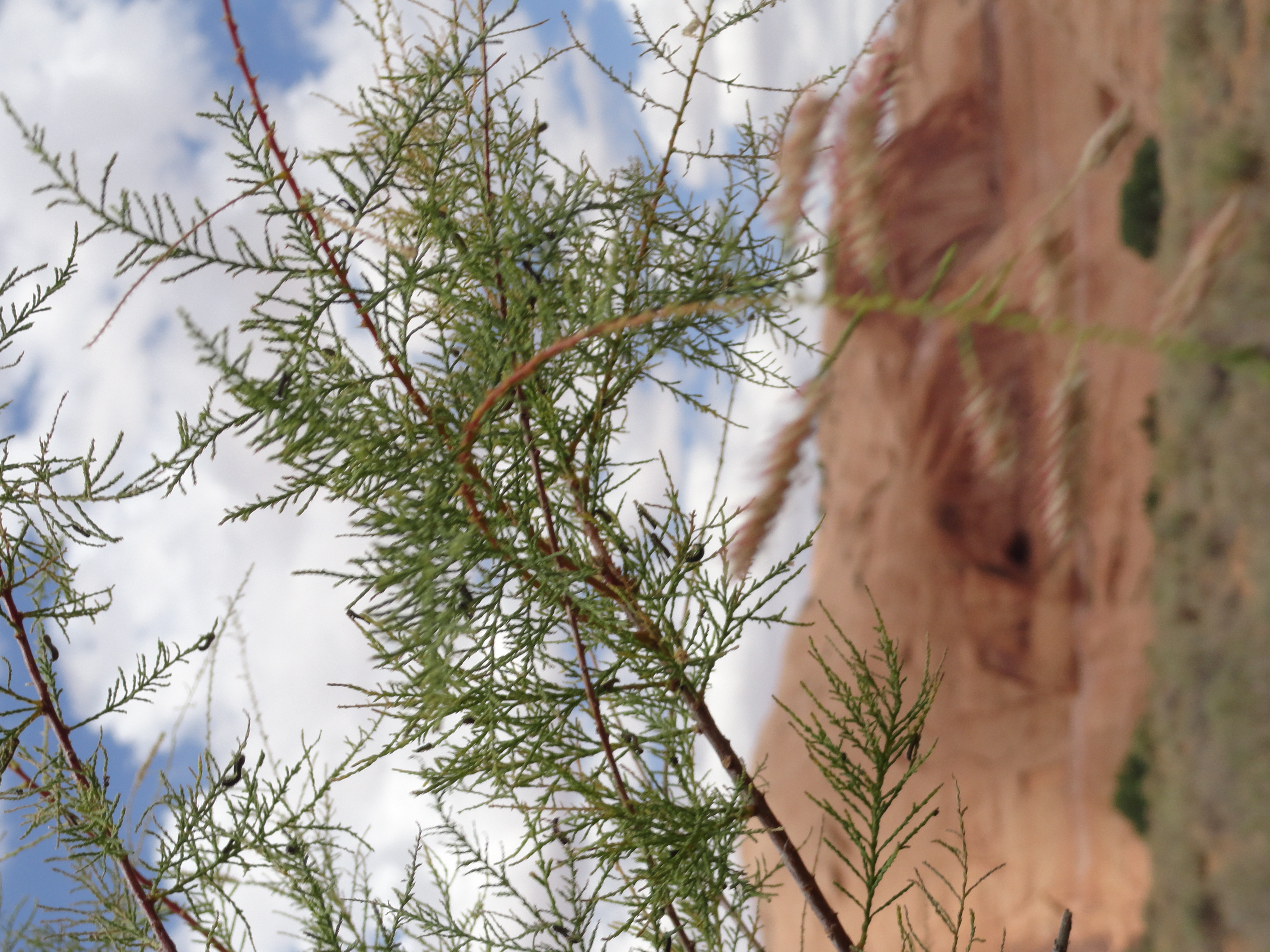
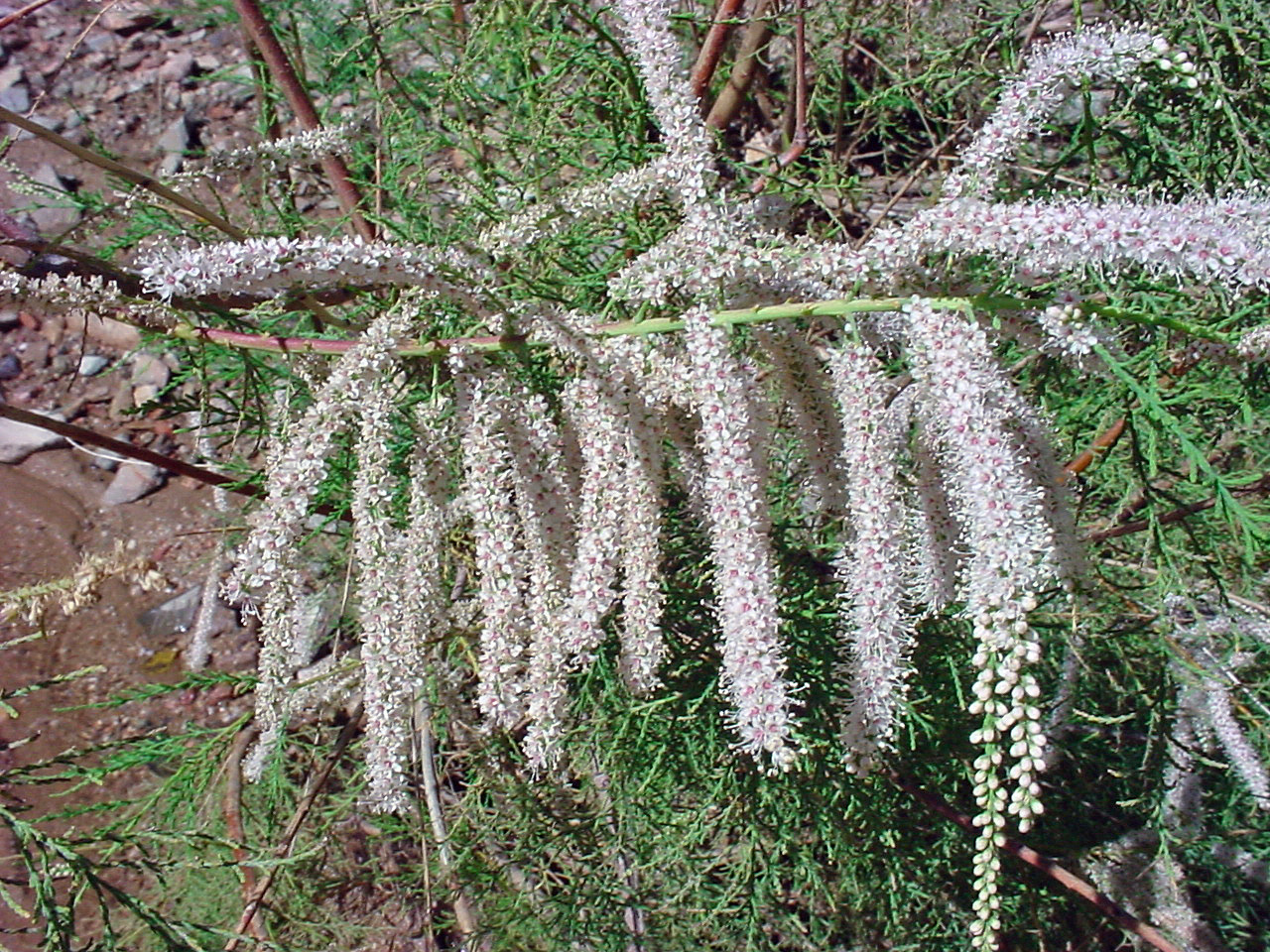
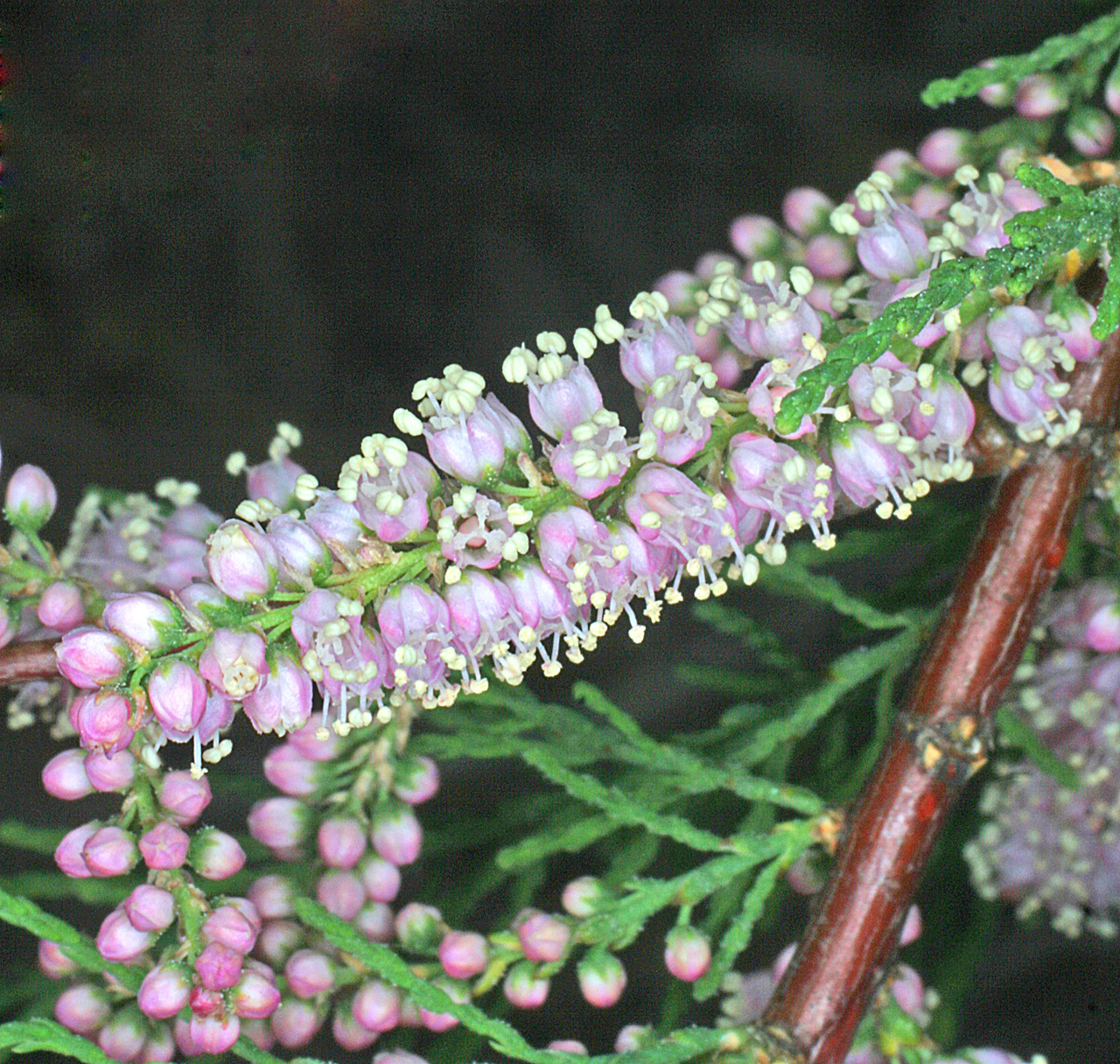
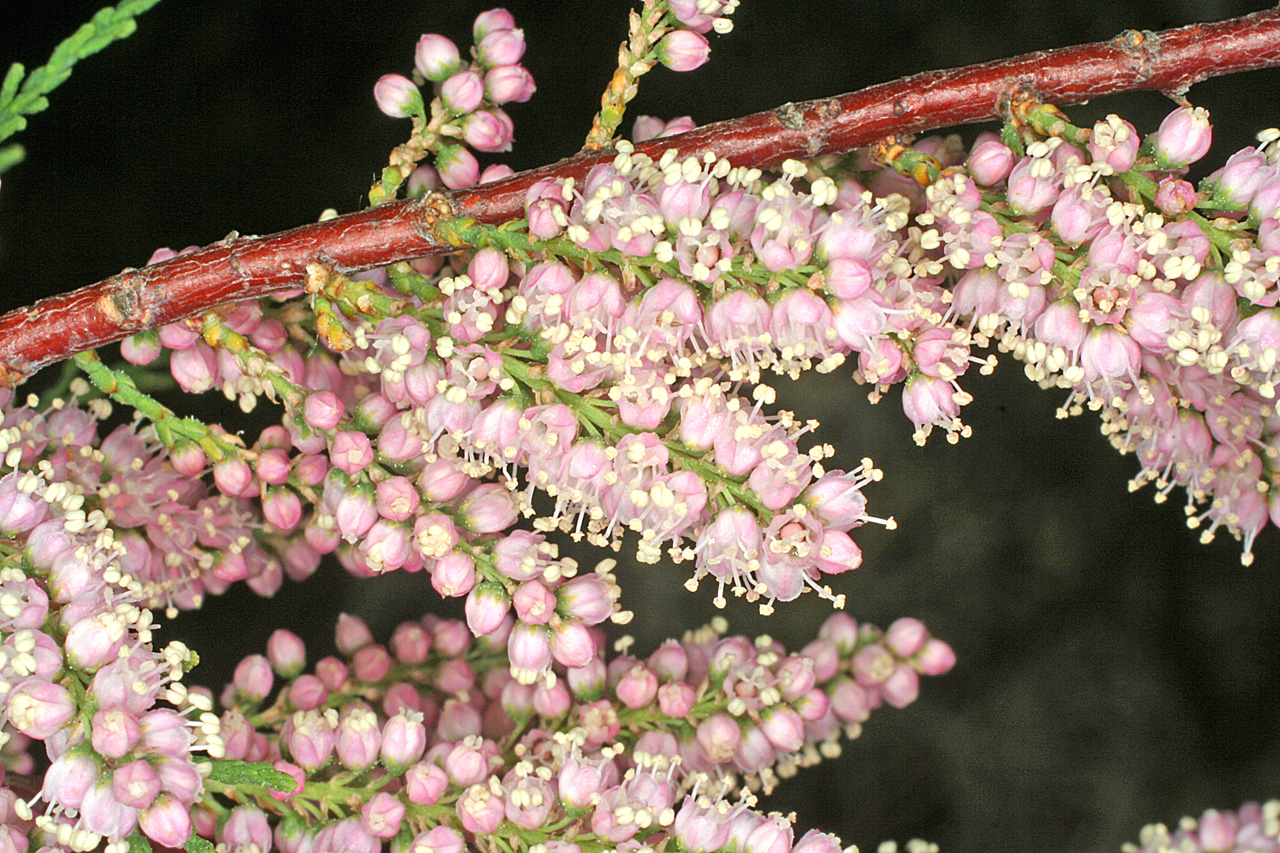
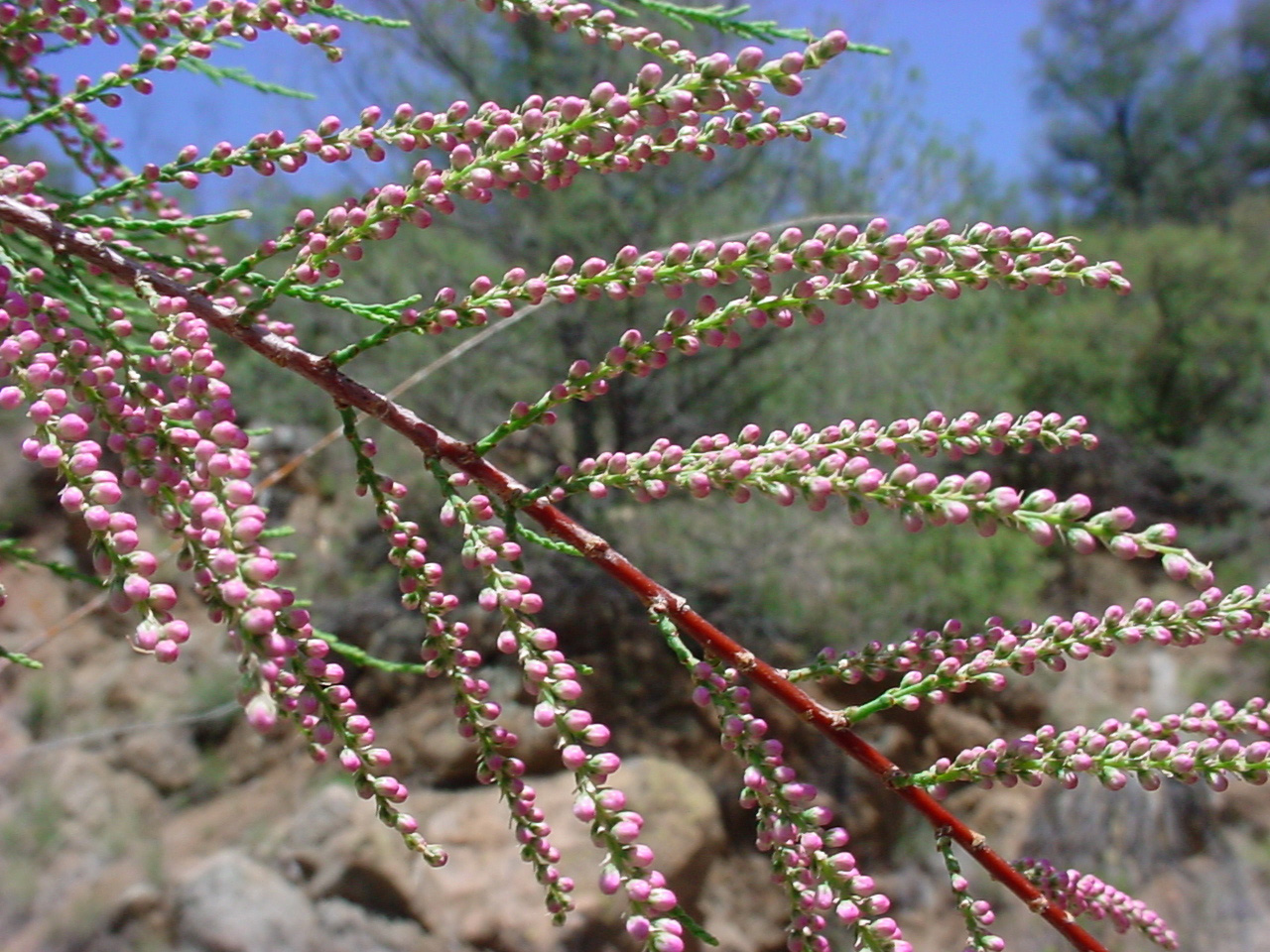
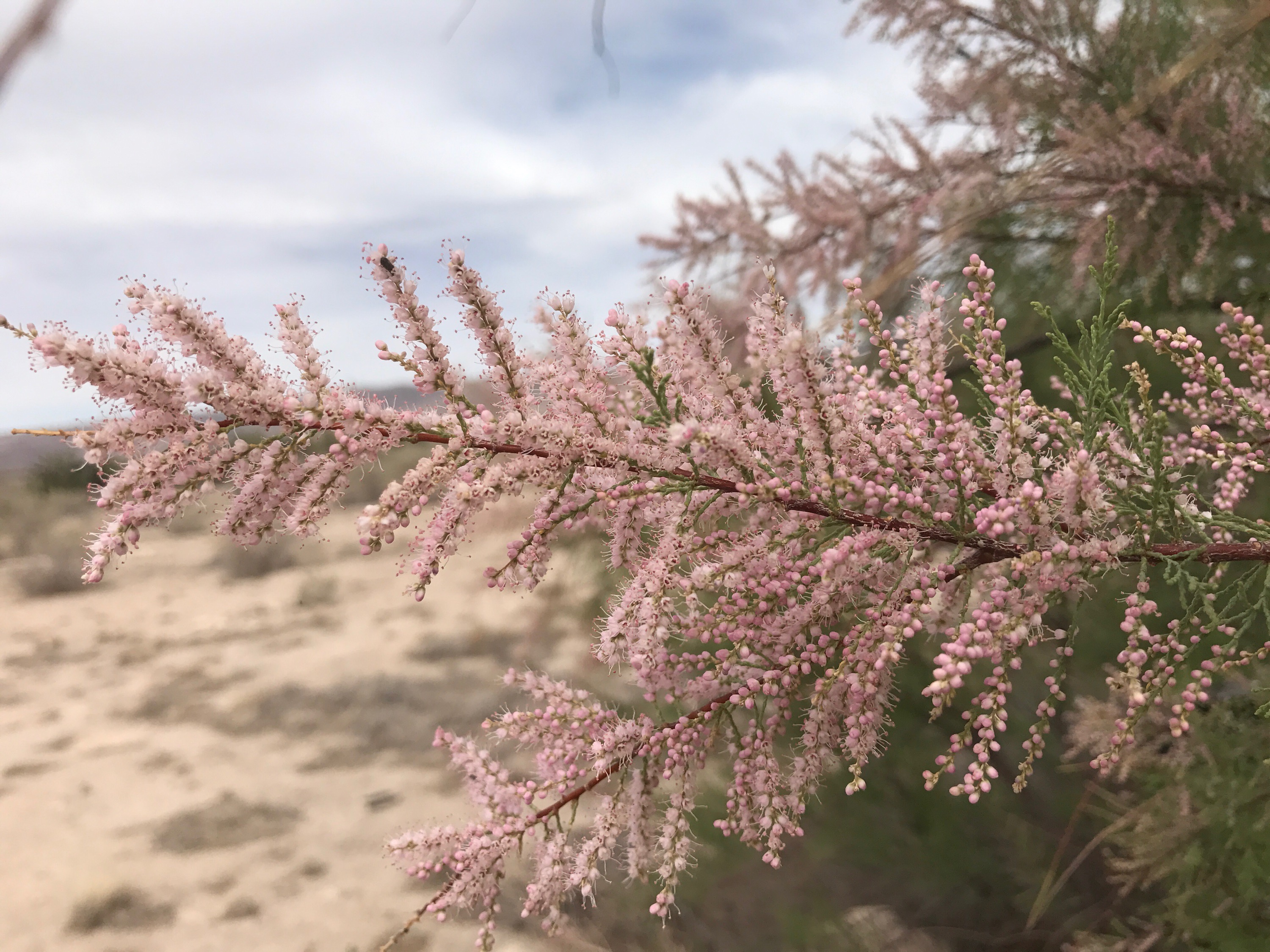
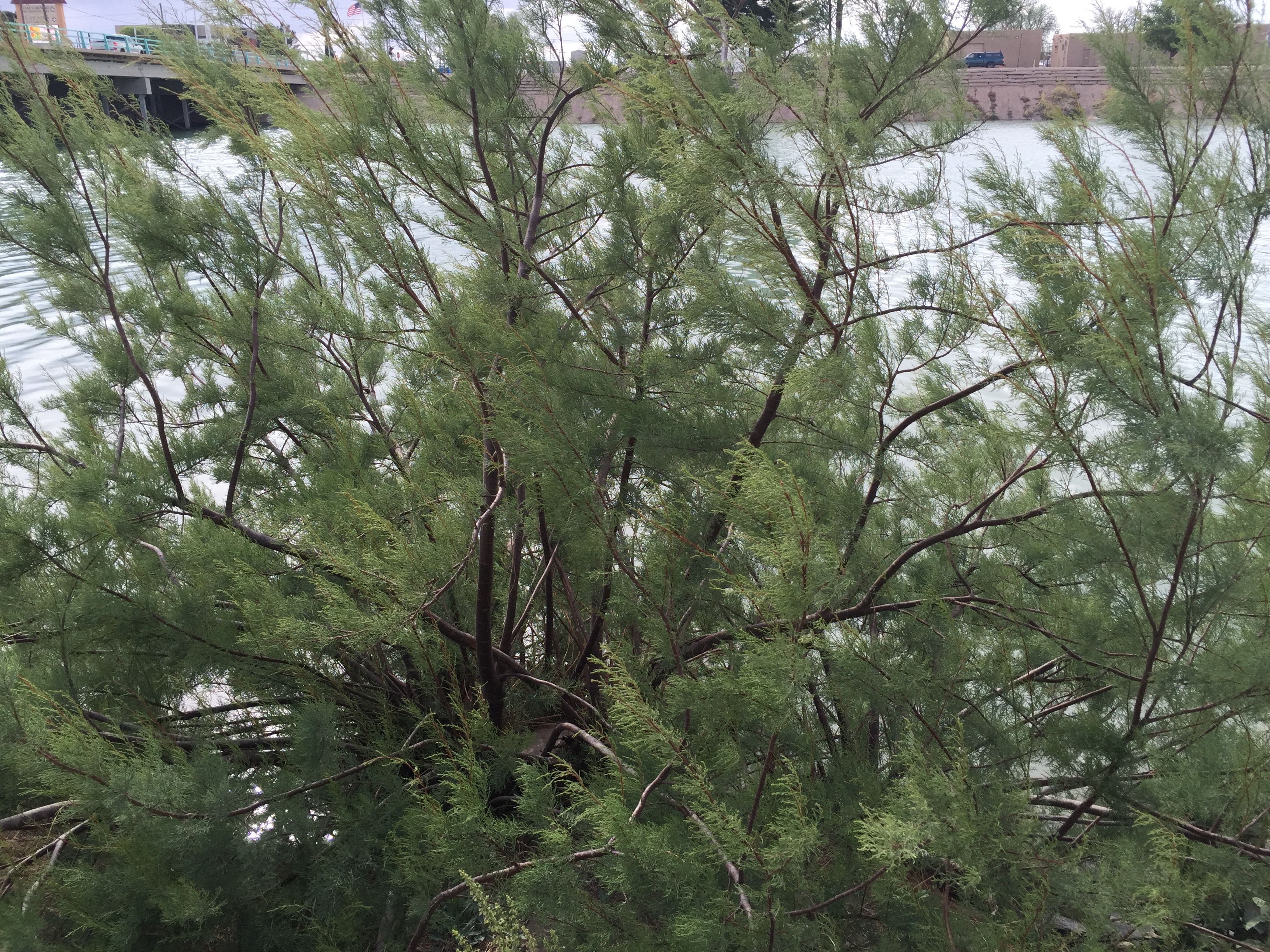
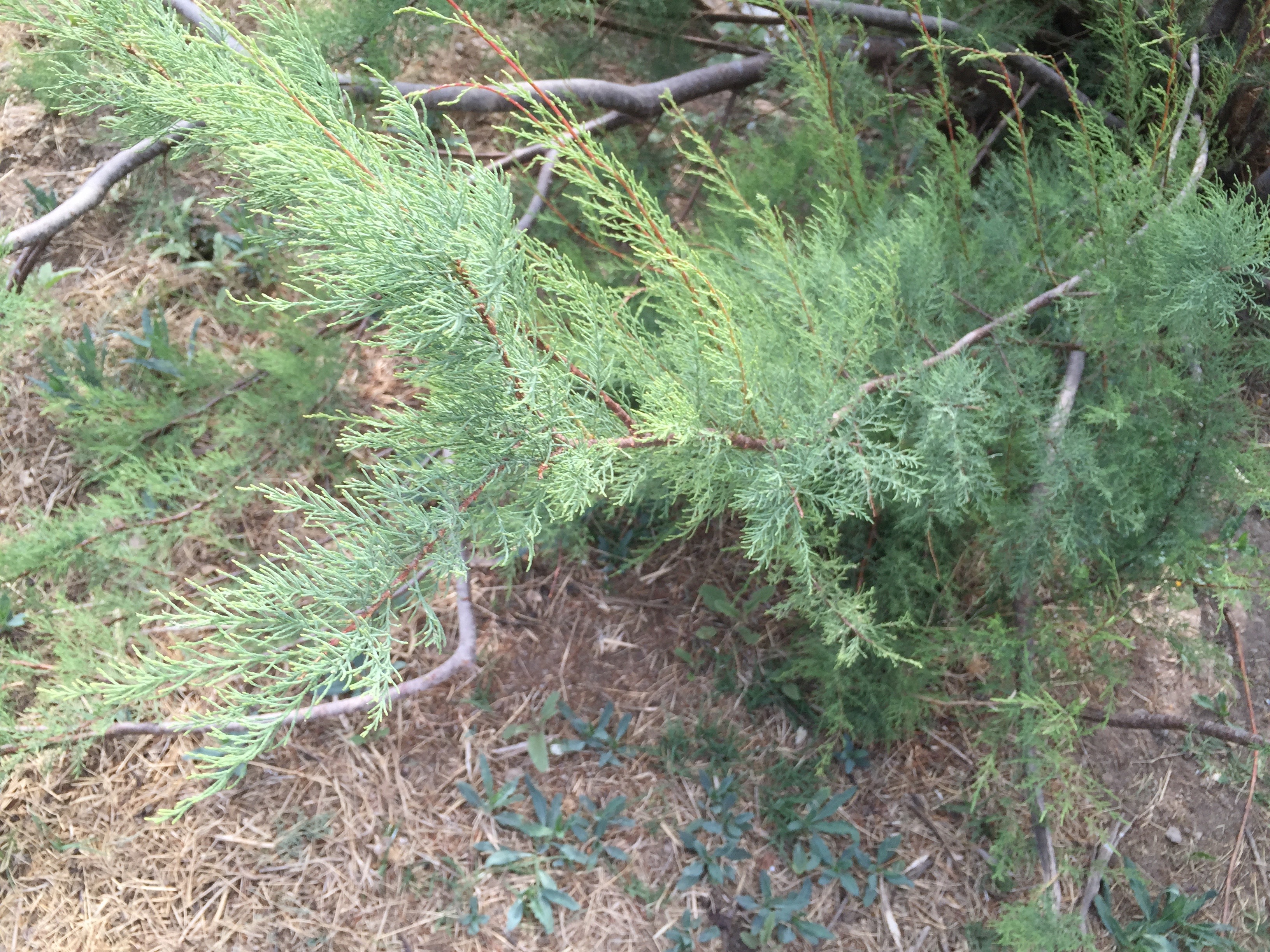
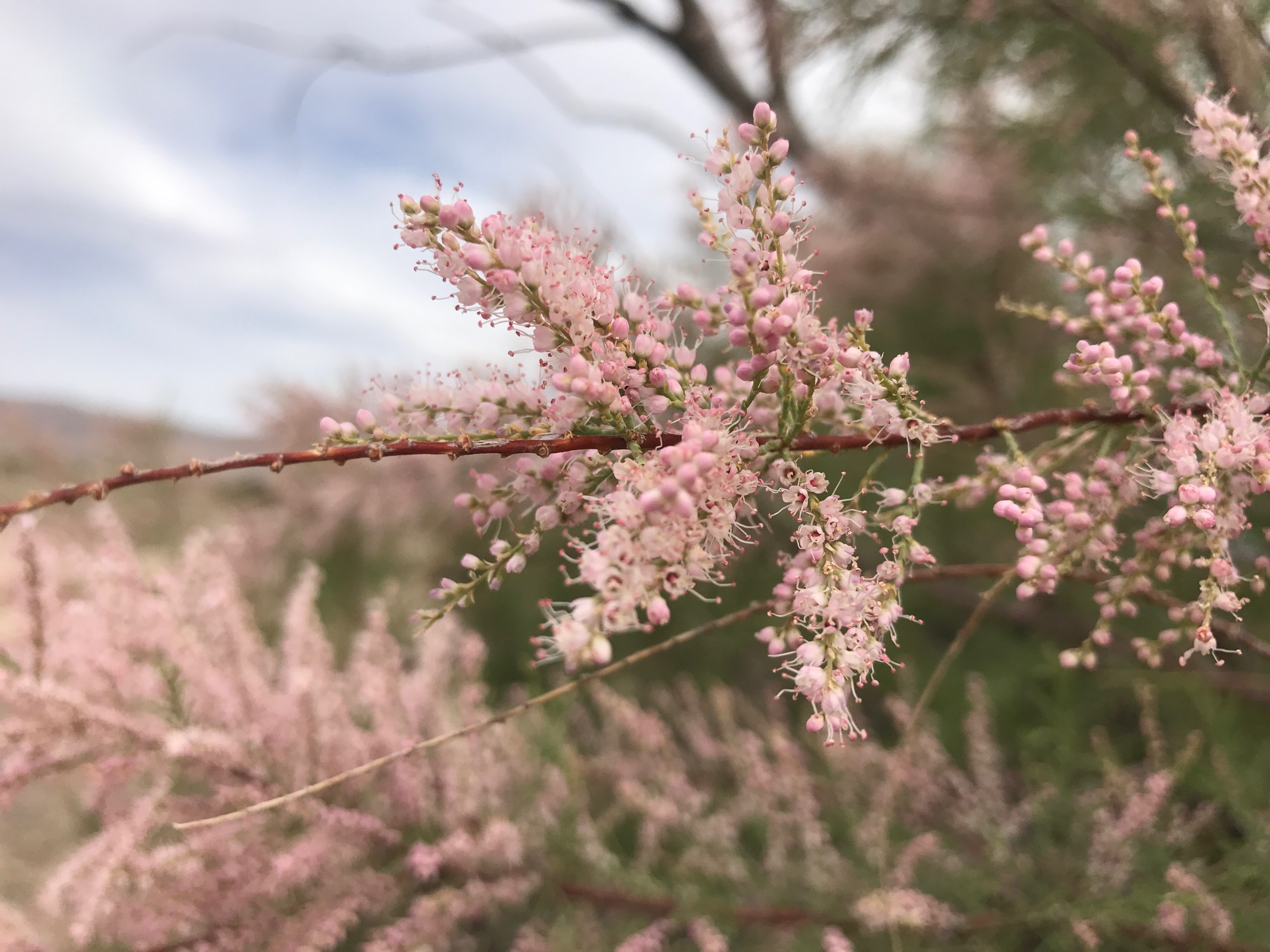
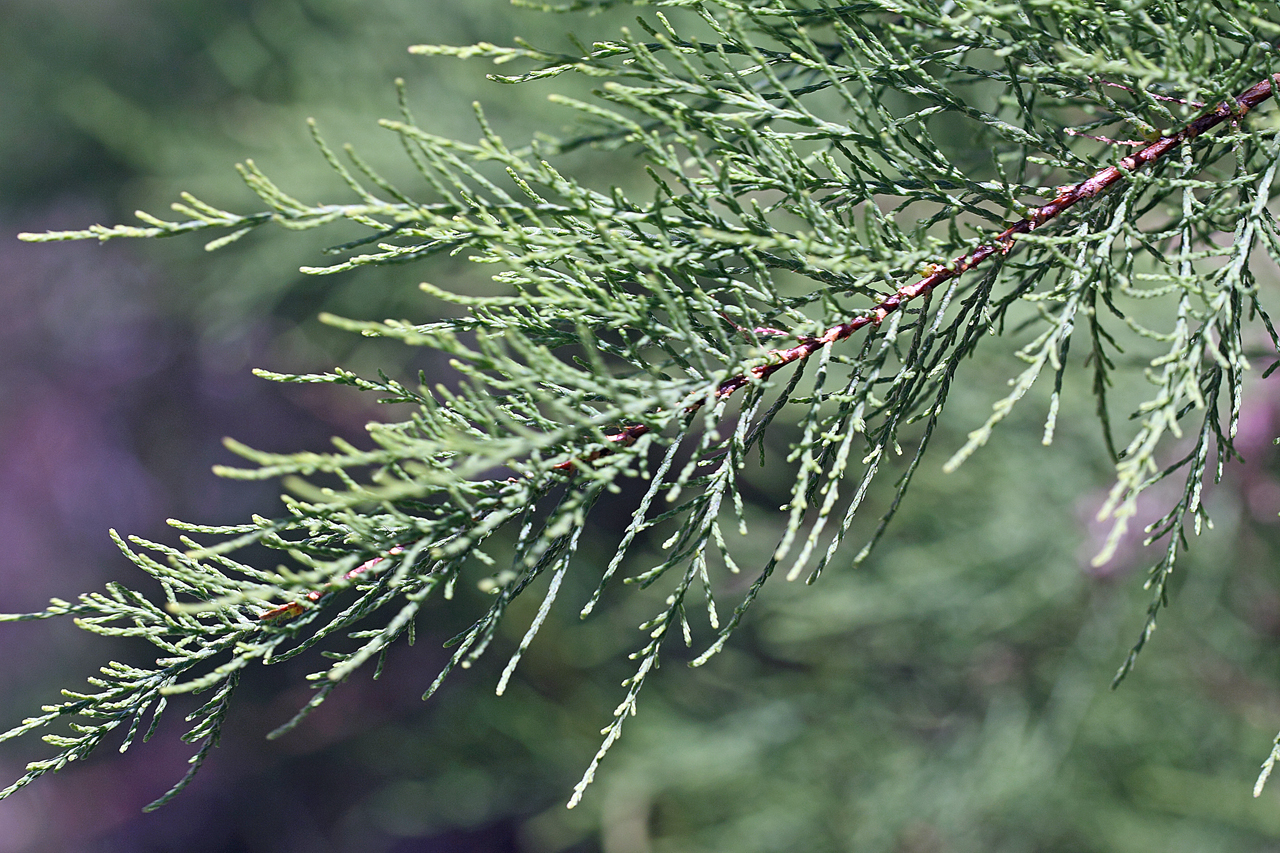
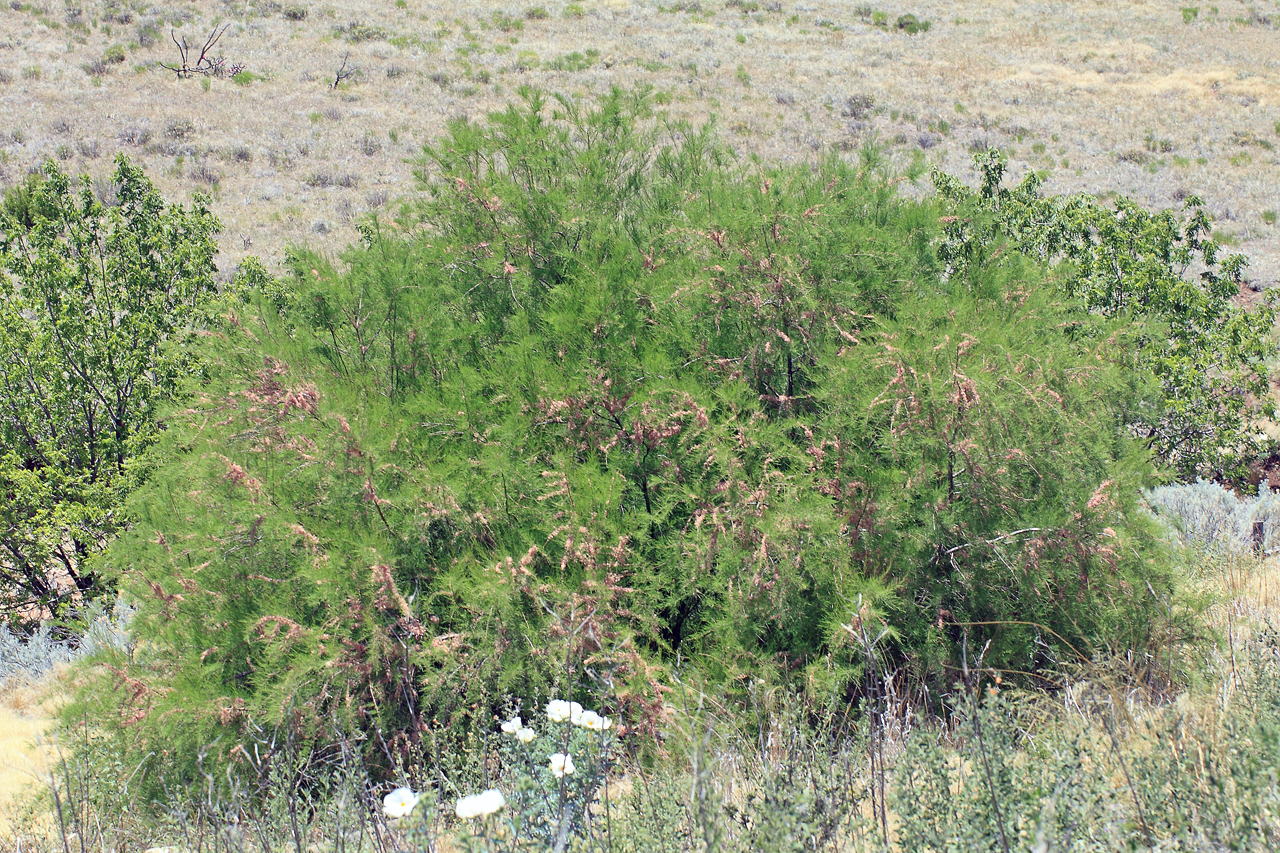
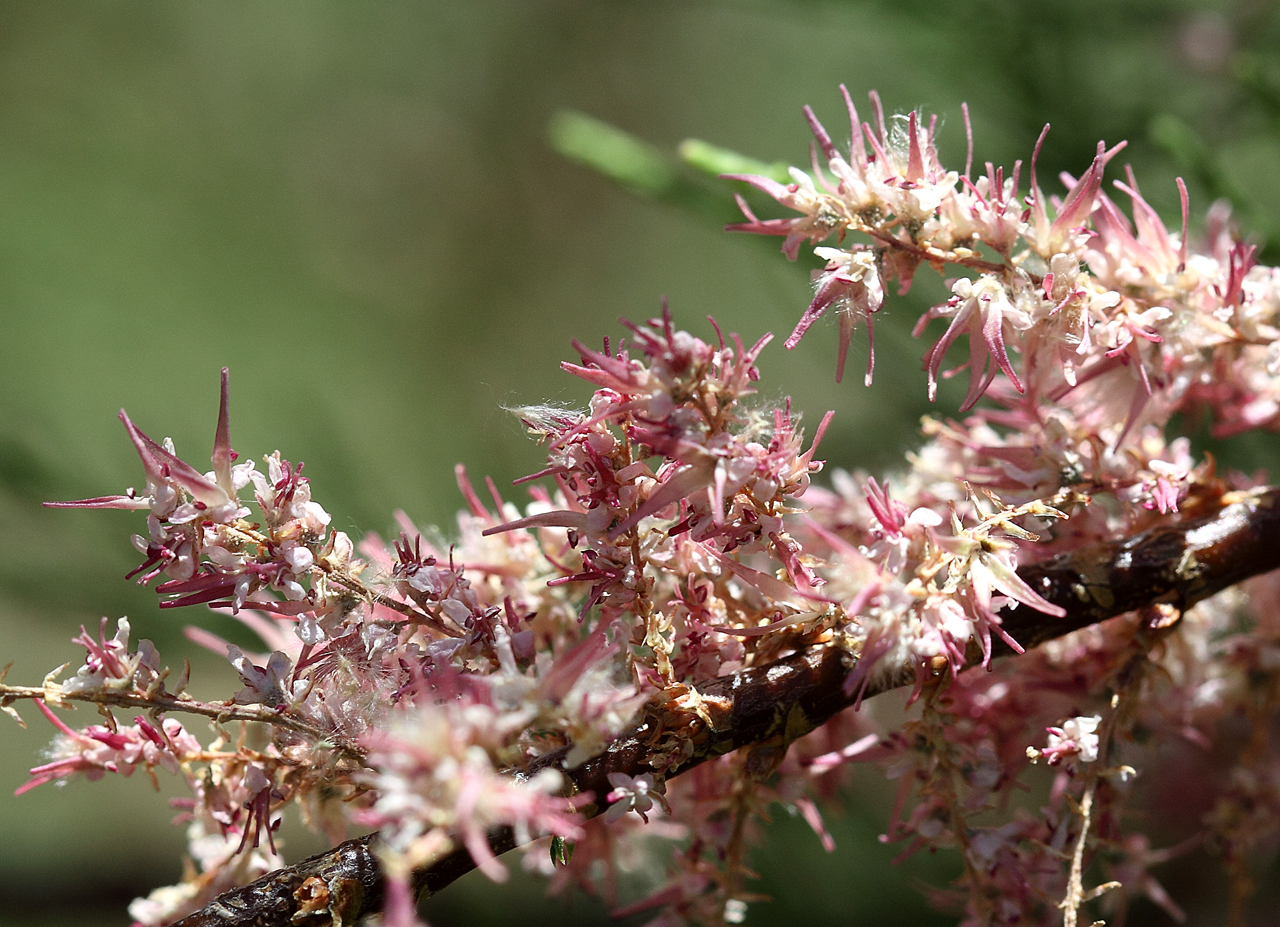
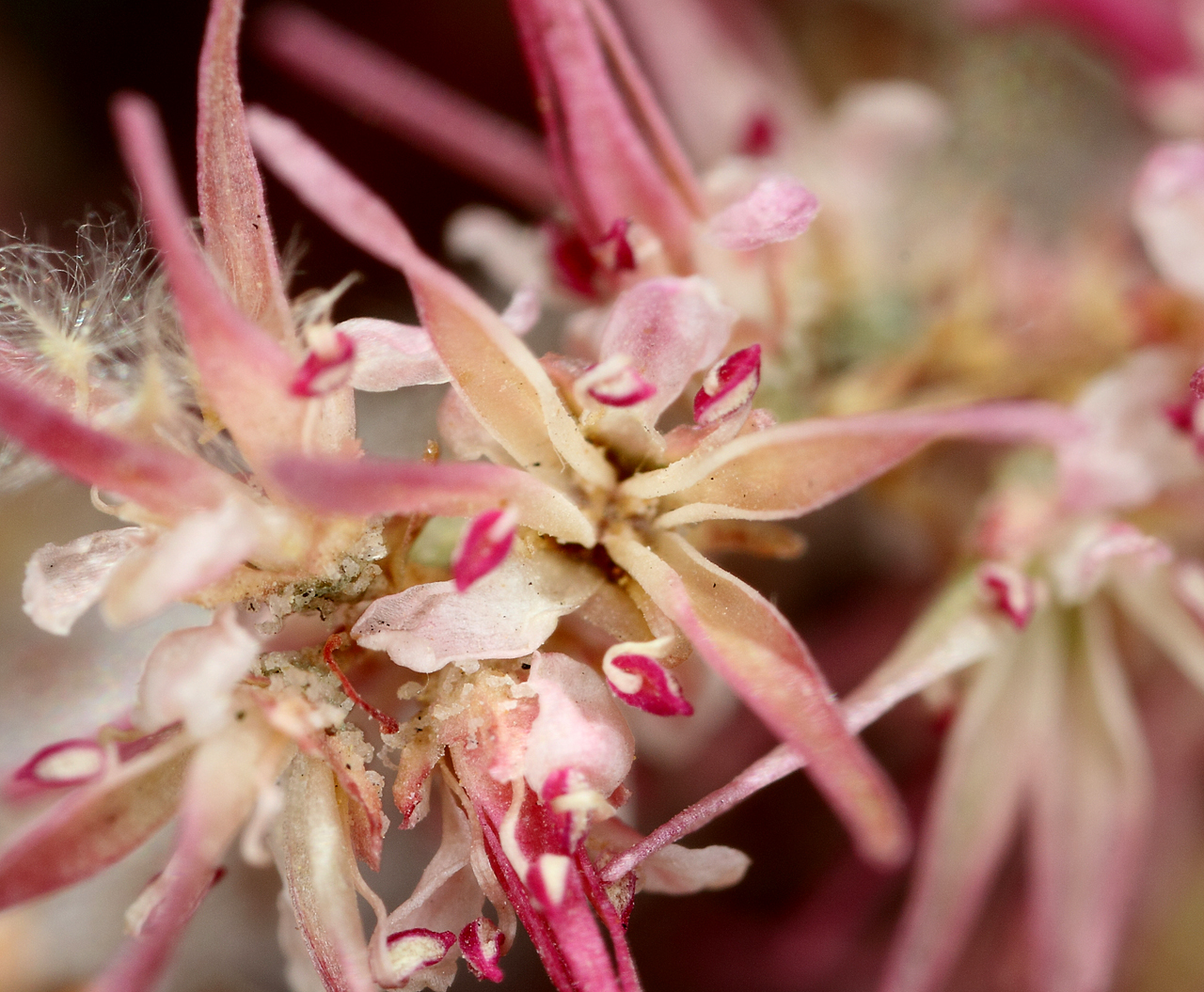
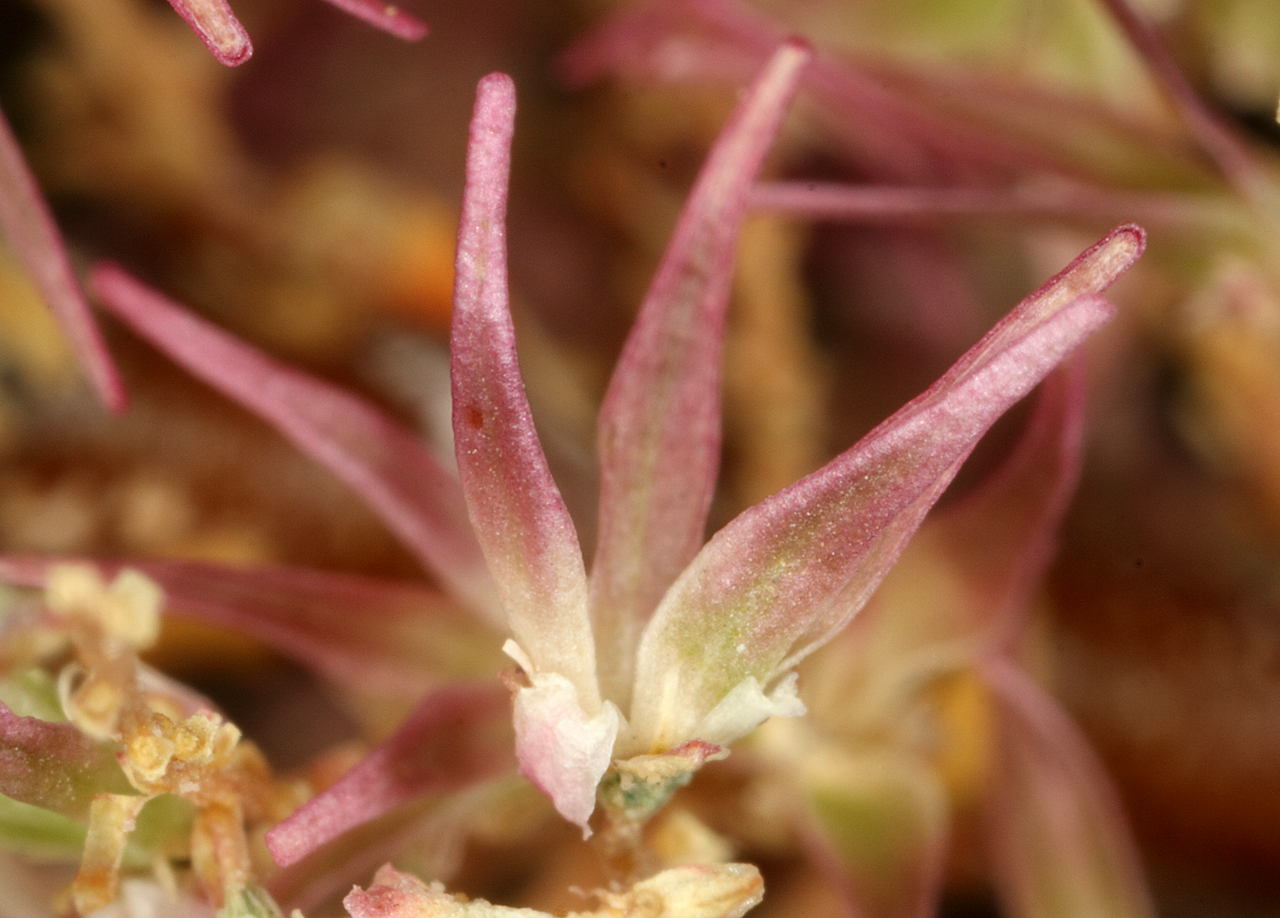
Copyright 2018 New Mexico State University. Individual photographers retain all rights to their images. Partially funded by the Western Sustainable Agriculture Research and Education Program (westernsare.org; 435.797.2257), project EW15-023. Programs and projects supported by Western SARE are equally open to all people. NMSU is an equal opportunity/affirmative action educator and employer.
NMSU does not discriminate on the basis of age, ancestry, color, disability, gender identity, genetic information, national origin, race, religion, retaliation, serious medical condition, sex (including pregnancy), sexual orientation, spousal affiliation or protected veteran status in its programs and activities as required by equal opportunity/affirmative action regulations and laws and university policy and rules. For more information please read the NMSU Notice of Non-discrimination.

